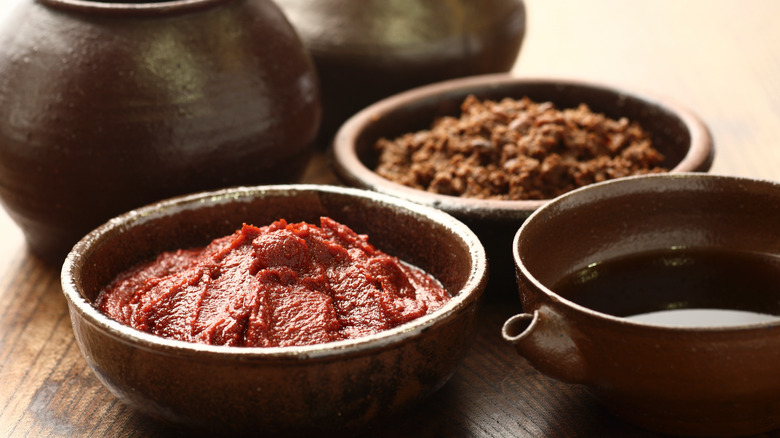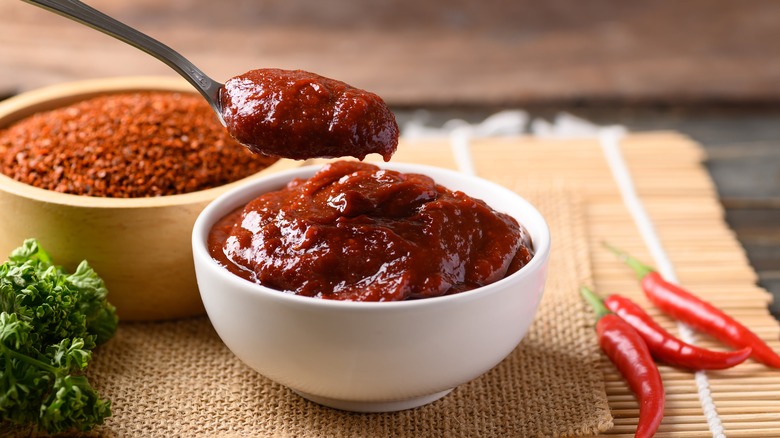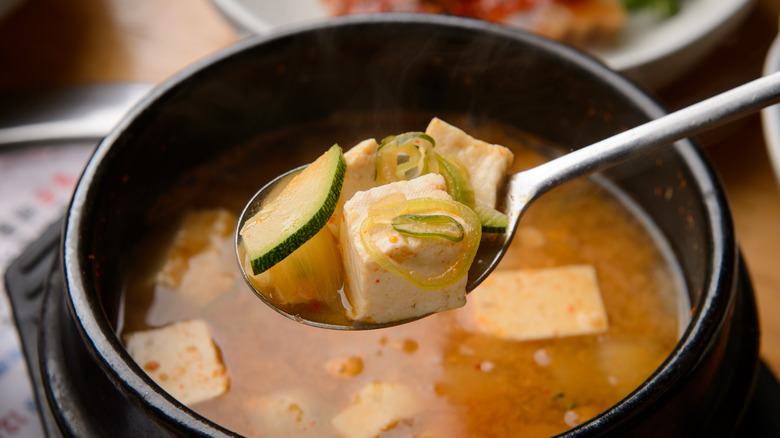The 3 Essential Jang Sauces Anyone Cooking Korean Cuisine Should Have
When it comes to Korean cooking, there are a number of recipes that will call for the use of an ingredient with a name ending in "-jang." Many Korean dishes involve using one of three different items: ganjang, doenjang, or gochujang. These ingredients can usually be purchased in specialty Asian food stores, like H Mart, but they may also be found in international aisles of supermarkets, depending on your location.
Although all three of these ingredients end with the same sound, they're actually all vastly different from one another, and have varying uses depending on the recipe. In fact, two of them are actually pastes that require the help of a few other ingredients to turn them into a sauce. But if you plan on cooking up some Korean cuisine in your own kitchen, you'll want to make sure you have these three on hand, as they're all an important part of Korean cooking.
The differences between the three ingredients
Ganjang is soy sauce, but there are a few different versions of it. Ganjang is the standard sauce, which is commonly used in Korean cooking, while whe-ganjang denotes that the soy sauce has been made in Japan. Guk-ganjang is a Korean soy sauce specifically used for soups and salads. It is a little saltier than the standard soy sauce, and features a lighter color.
Doenjang is a little thicker, and is comparable in consistency to peanut butter. It's actually a paste made from salted, fermented soybeans, and it's often used to make soups and stews. The paste can be fermented using a brine for any length of time between six weeks to a few years, though longer fermentation will alter its flavor.
Gochujang is also a fermented paste, though its flavors differ from doenjang. Gochujang takes its flavor from red chili peppers, fermented soybeans, and glutinous rice, seasoned with a little salt and sugar. Its consistency is also pretty thick, so it's usually thinned out before being added to any dishes.
They are used in a variety of dishes
So, what are these sauces used for? Since ganjang is used in place of soy sauce, it can be used for marinades, cooking up stir fries, and creating some dipping sauces for mandu, a kind of Korean dumpling. Its other variety, guk-ganjang, is used more for adding a little extra flavor into soups.
Doenjang, meanwhile, is more often found in recipes for Korean soups and stews. One popular recipe is doenjang-jjigae, which flavors the broth of the soup using doenjang. The soup also adds in a few different chopped vegetables, and protein in the form of either tofu or meat.
Gochujang is a little more versatile, and is often used to increase the spiciness of a recipe. It can be used to marinate meats or tofu, or mixed into a soup broth. You can also turn it into a sweet-and-spicy dipping sauce, with the addition of some honey, vinegar, and seasonings.
If you're cooking up some Korean cuisine, it's important to keep these three products on hand to enhance the flavors of any dishes you prepare.


